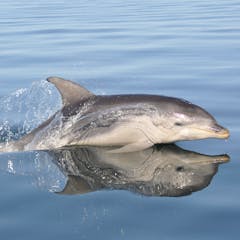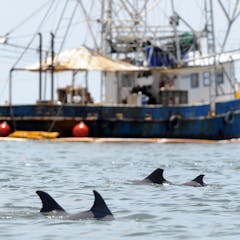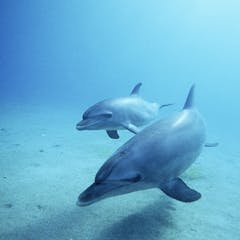
Articles on Marine mammals
Displaying 1 - 20 of 39 articles

The first dedicated scientific surveys have confirmed the presence of blue whales in Seychelles.

Researchers are finding alarming concentrations of persistent pollutants such as PFAS in Australian dolphins. These record-breaking levels are cause for concern.

New research shows that relatively large microplastic particles can make their way into the body tissues of marine mammals.

Sadly, the chances of survival for the remaining whales is very low – and time is fast running out.

Orcas appear to be imitating the behaviour of one in particular by damaging sailboat rudders.

Raw seafood dishes such as sushi, poke bowls and ceviche are increasingly popular, but can harbour fish-borne parasites. What’s the best way to protect ourselves?

Macquarie Island isn’t just a windswept rock halfway to Antarctica. It’s a globally unique home to dozens of bird and marine mammal species, hence the government’s plans to give it greater protection.

A new acoustic recorder could track the movements of marine mammals more accurately.

Noisy oceans are having a significant impact on marine life.

Using urine and signature whistles from other dolphins, a team of scientists has shown that dolphins use signature whistles like names and hold mental representations of other dolphins in their minds.

A new report shed light on the migratory routes of 1,000 whales worldwide.

New research finds that ‘leaky mitochondria’ help keep sea otters warm.

Lo, a California sea lion, was able to control what she perceives using her whiskers — a highly cognitive skill.

New research combines cutting-edge engineering with animal behaviour to explain the origins of efficient swimming in nature’s underwater acrobats: seals and sea lions.

By measuring how and when elephant seals sleep, researchers were able to figure out how elephant seals change their risk-taking behavior as they gain weight.

This newly discovered ancient monk seal is challenging previous theories about how and where monachine seals evolved. It’s the biggest breakthrough in seal evolution research in about 70 years.

Wild dolphins are fast, smart and hard to study, but it is important to understand how human actions affect their health. So we are building a drone to sample hormones from the blowholes of dolphins.

Arctic cod are key prey for seals, whales and seabirds. What happens when ship noise drives them away?

Clapping underwater takes real strength. But wild grey seals can do it, to warn off competitors and attract potential mates.

The long tusk of the male narwhal earned these whales their fanciful nickname. But there’s more to these Arctic mammals than their unique spiral tooth.
